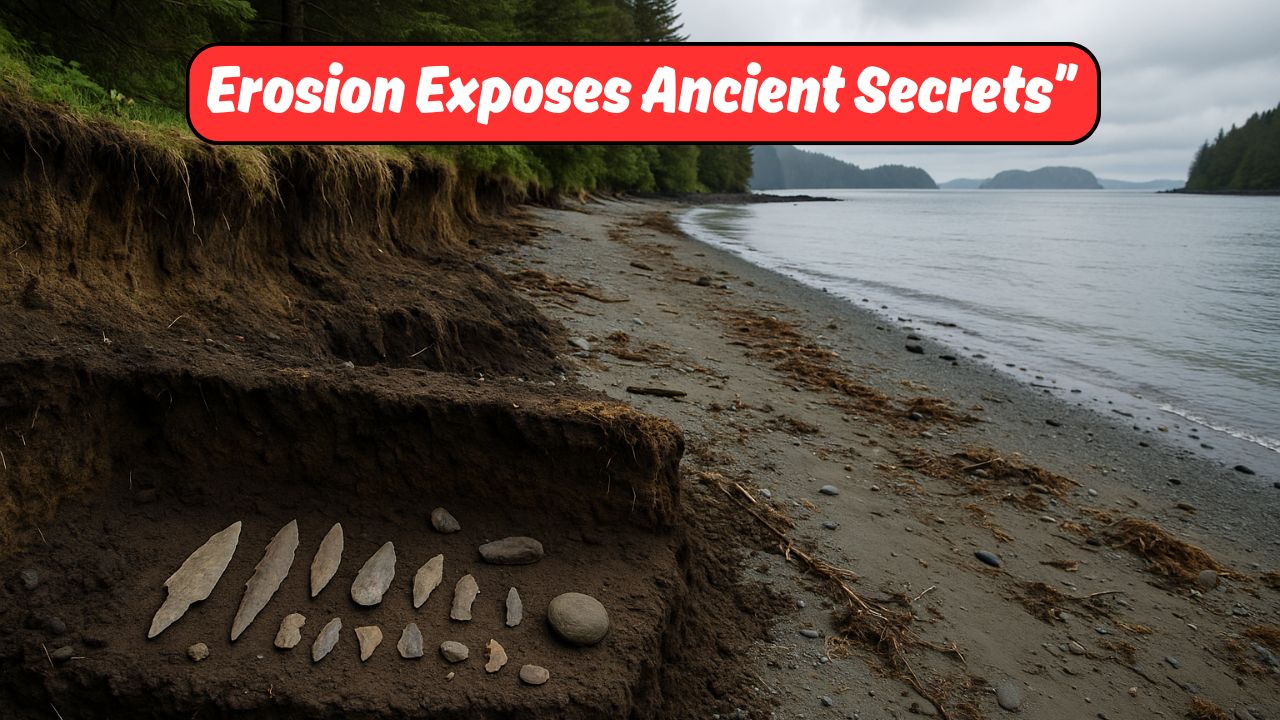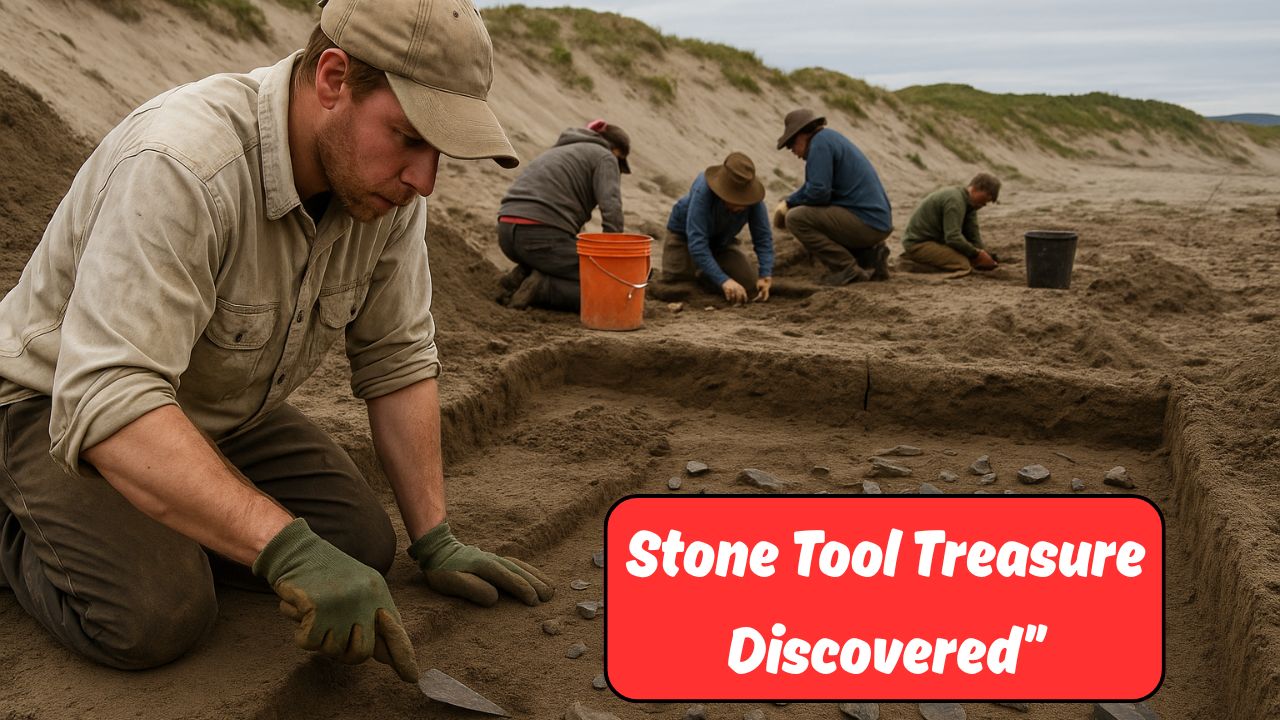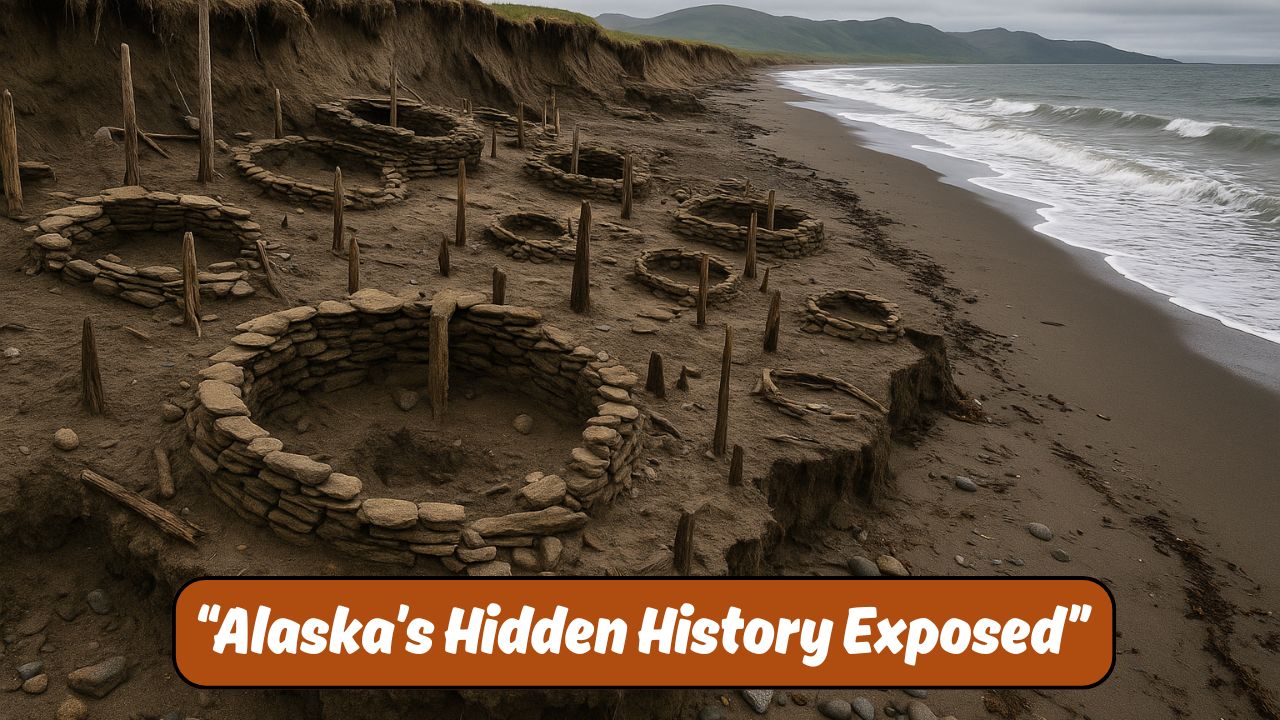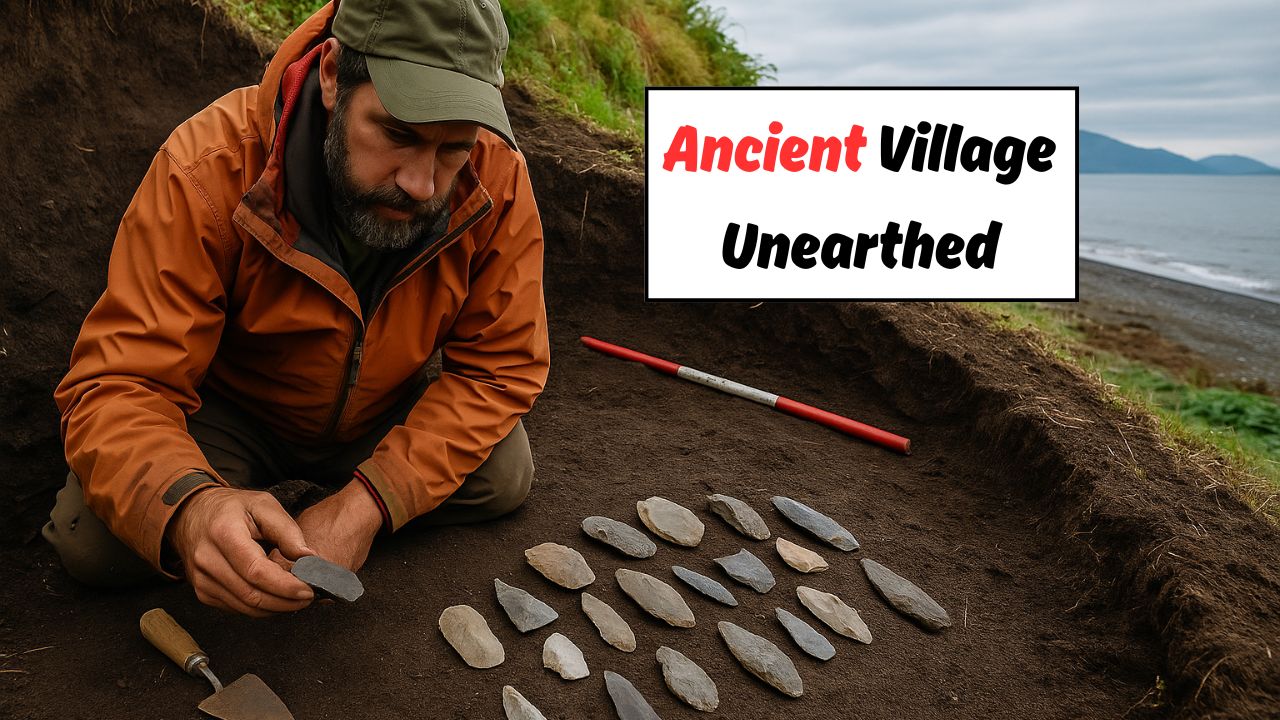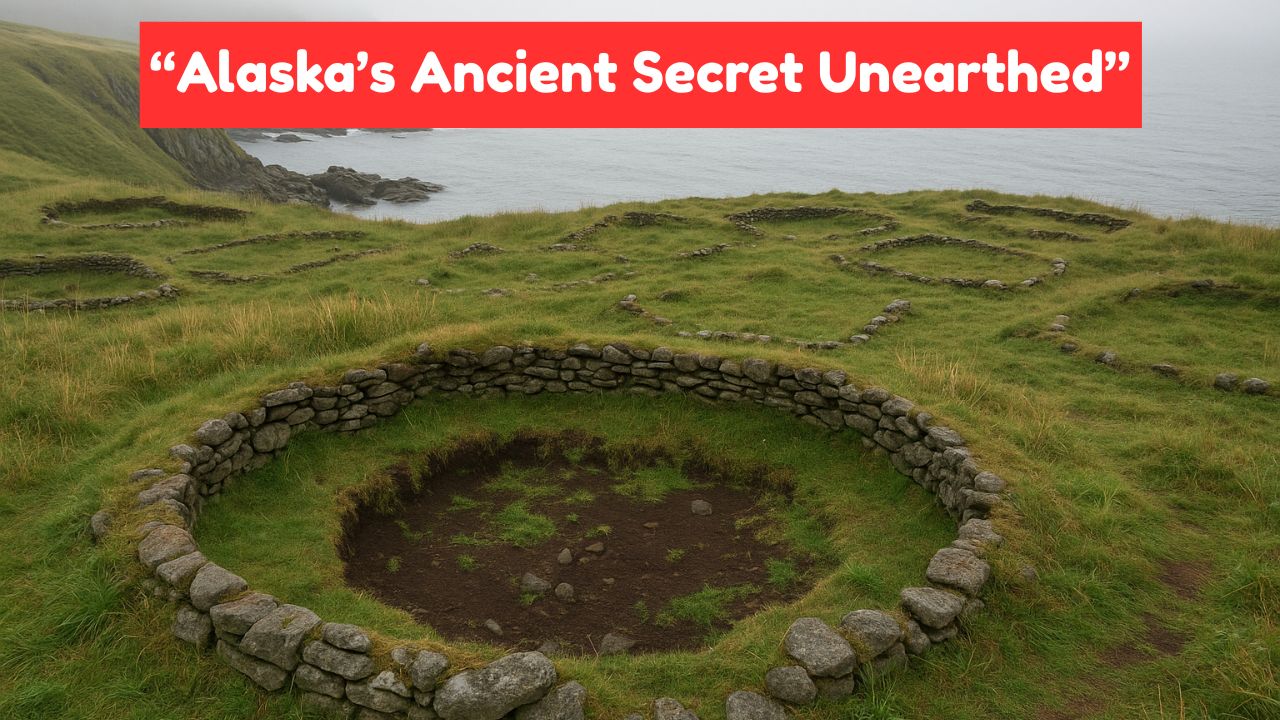Lost Alutiiq Settlement – In a groundbreaking archaeological revelation, a long-lost Alutiiq settlement has emerged from the shadows of time on Alaska’s Shuyak Island. As erosion chips away at the island’s coastline, it’s not just soil and stone that are being lost—but history itself is being uncovered. For centuries, the Alutiiq (or Sugpiaq) people lived, thrived, and evolved across the rugged terrains and shorelines of the Kodiak Archipelago. However, many of their early settlements were lost to time—until now. Thanks to recent erosion caused by storms and rising sea levels, archaeologists and local researchers have been granted a rare window into ancient Alutiiq life. Tools, carvings, remnants of housing structures, and food storage pits—dating back over 7,000 years—have begun resurfacing naturally, providing an unfiltered look at indigenous survival and adaptation in one of the world’s harshest maritime climates. The site, located near a remote inlet on Shuyak Island, remained hidden beneath layers of soil and moss for millennia. But nature, as it often does, decided it was time to share its secrets. The discovery has electrified the scientific community, ignited cultural pride among Native groups, and intensified the urgency of preserving these fragile clues before they’re swept away forever.
The Alutiiq People: Who They Were
The Alutiiq are Indigenous peoples of the Alaska Peninsula and the Kodiak Archipelago.
- Also known as Sugpiat or Pacific Eskimo.
- Traditionally relied on fishing, hunting sea mammals, and gathering wild plants.
- Expert boat builders and navigators using qayaqs (skin-on-frame kayaks).
- Lived in semi-subterranean homes insulated with sod and driftwood.
- Known for intricate wooden carvings, masks, and spiritual practices.
- Language: Alutiiq (Sugcestun), a dialect of the Yupik language family.
- Alutiiq culture was heavily disrupted during Russian colonization in the 18th century.
- Today, revival efforts are underway through museums and tribal initiatives.
Site Details: Where and What Was Found
The newly revealed site lies on Shuyak Island, located just north of Kodiak Island.
| Discovery Detail | Description |
|---|---|
| Location | Coastal edge of Shuyak Island |
| Time Period | Approximately 7,000 years ago |
| Main Artifacts | Stone tools, charred bones, wood fragments |
| Type of Site | Seasonal fishing/hunting camp |
| Estimated Occupation Span | Over 3,000 years with periods of re-occupation |
| Condition | Partial exposure due to erosion |
| Terrain | Wind-swept beach, forested inland |
| Threats | Coastal erosion, human looting, climate change |
Key Artifacts Unearthed from the Site
The eroded site has uncovered a treasure trove of prehistoric tools and materials.
 7K-Year-Old Alaskan Village Found Beneath Sand – Archaeologists Thrilled by Stone Tool Treasures!
7K-Year-Old Alaskan Village Found Beneath Sand – Archaeologists Thrilled by Stone Tool Treasures!
Notable Artifacts Include:
- Barbed harpoons: Used for seal and whale hunting.
- Bifacial knives: Sharp-edged tools shaped from volcanic rock.
- Shell middens: Layers of discarded shells showing long-term shellfish consumption.
- Stone oil lamps: Used for lighting homes during long winters.
- Obsidian flakes: Rare, indicating trade with distant communities.
- Charred remains of fish bones: Suggest organized food processing.
- Wooden post holes: Possible evidence of framed housing.
- Personal ornaments: Beads, pendants, or decorative carvings.
Scientific and Cultural Significance
This site isn’t just an archaeological marvel—it’s a window into Alutiiq resilience.
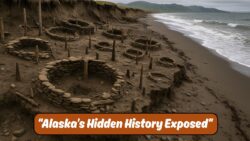 7,000-Year-Old Indigenous Ruins Exposed by Beach Erosion – Alaska’s Hidden History Emerges!
7,000-Year-Old Indigenous Ruins Exposed by Beach Erosion – Alaska’s Hidden History Emerges!
Why This Discovery Matters:
- Fills Historical Gaps: Connects cultural threads between modern Alutiiq and prehistoric ancestors.
- Preservation Alarm: Highlights how climate change is destroying or revealing heritage.
- Interdisciplinary Opportunity: Anthropology, oceanography, and climate studies converge here.
- Cultural Reclamation: Gives Native groups tangible proof of ancestral presence.
- Trade Insights: Obsidian indicates wide trade networks previously undocumented.
Role of the Alutiiq Museum and Local Communities
Local involvement has been central to protecting and interpreting the site.
- The Alutiiq Museum in Kodiak has launched documentation projects.
- Community elders are helping interpret artifact functions and cultural contexts.
- Students are being engaged through on-site volunteer programs.
- Collaborative excavation efforts ensure ethical and respectful handling.
- Emphasis is placed on community-based archaeology.
Challenges Facing the Site’s Preservation
Despite its value, the site faces several preservation threats.
- Accelerated Erosion: Storm surges and rising sea levels are washing away layers of history.
- Looting Risks: News of such discoveries often invites illegal artifact hunters.
- Lack of Immediate Funding: Emergency excavation requires rapid mobilization of resources.
- Remote Location: Logistical difficulties in protecting or studying the site thoroughly.
- Policy Gaps: Insufficient federal protection for rapidly emerging sites.
What Happens Next?
Efforts are underway to ensure that the site is documented before it’s lost forever.
- Emergency field teams are mapping and photographing exposed areas.
- Alutiiq elders are being consulted for oral histories related to the location.
- The Museum is seeking grants to build digital reconstructions.
- There’s a push for government recognition of the site as archaeologically endangered.
- Longer-term plans include developing interpretive displays and school outreach programs.
